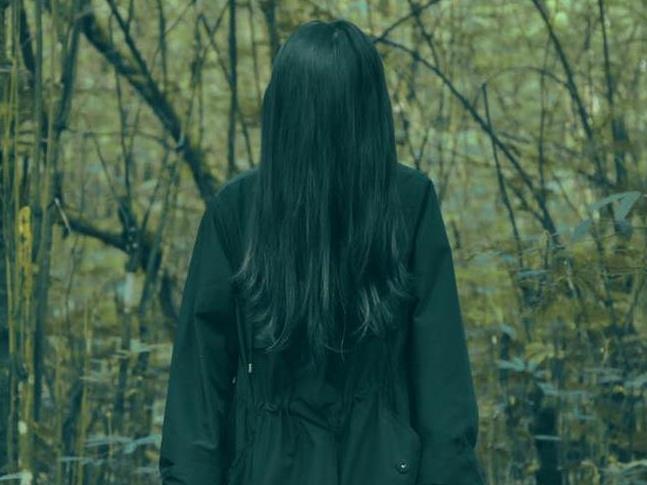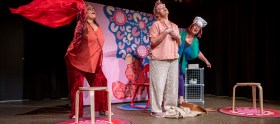Image via www.pexels.com
One of the arts industry’s most valuable resources is its people. People are relied on for their passion, their productivity, and in many cases, their willingness to go “above and beyond” to ensure the sector can flourish.
For anyone working in the arts, such expectations can exacerbate stress and tiredness, but for those with an invisible illness hidden from colleagues or employees, such expectations are simply unrealistic and exclusionary. What happens to your creativity and career when you can’t “push through”?
Stigma and preconceived notions of what illness and disability are often limit what people
‘Invisible illness can affect people in many different ways; no one experience is the same. People are very quick to judge on how someone appears physically, which can really affect the way people with invisible illness are treated,’ said Ibacache.
Larissa MacFarlane, who is participating in Sickness and Stealth’s current art exhibition, Invisible said the expectations of overwork when installing exhibitions or leading up to an arts event make it difficult for those with invisible illness or a disability to participate.
‘I don’t think that this
MacFarlane’s visual art practice began in her 30’s after her brain injury rearranged her talents. ‘My disability has given me a way to be an artist as my brain injury ignited a passion for creativity and all things visual, but my illness has also made it difficult to progress in my career. For example, accessing formal education, such as
The Invisible exhibition aims to showcase how people experience chronic illness, disability, and mental health issues in a multiplicity of ways that are often hidden from view, or silenced.
It’s opened a dialog for creatives beyond the four walls of the gallery space. How can we not only illuminate the experiences of those with an invisible illness to lift the
Invisible illness, visible costs
‘So many people are affected and I think we tend to suffer in silence a bit, ‘ said artist Kirrily Anderson, who suffers from CFS/ME and Fibromyalgia.
‘It’s so helpful to have support, especially within your field or community.’
Prior to experiencing an invisible illness, artist Anderson was a freelance graphic designer.
‘The illness put a sudden halt to my career and I was pretty much housebound for three years,’ she said.
Though eventually returning to graphic design upon recovery, it wasn’t easy to balance work with
‘I didn’t want to tell my employer that I had health problems for fear of being judged. I tried to work through any bad days I had, but
Keeping her symptoms hidden from others had impacts on other areas of Anderson’s life. ‘I kept my illness on the down low in work circles because I thought it would affect the way people saw how I worked. Because of
For Anderson, her work often has a physical cost on her health. ‘I have to be really careful when I’m creating to not get in the zone too much, to get up and stretch and take breaks. I’d also love to create
‘Also spending so much money on therapies like regular
Creative work as a turning point
While careful not to romanticise any experience with an invisible illness by linking it to creative discovery or
‘When I was severely ill, I was connected online with a community of other sufferers. A lot of these people were creative and I began to notice how being creative actually helped people – and how it helped me too, ‘ she said.
In 2008, she published Creative For a Second, a collection of images and words by people living with CFS/ME.
‘This process showed me how having a project I was passionate about and that involved my skills as a designer as well as an artist was really important in maintaining a certain level of health…Publishing the book made me feel like my life wasn’t wasting away and that even though I was struggling with energy levels and a whole host of symptoms, I could still achieve something.’
For some, creative work can be an antidote to some symptoms of an invisible
‘I think for those living with invisible illness – and probably everyone, really – it’s so important to be doing something you love. Even if there are components of what you are doing that you don’t love, make sure some part of your day involves something you do love. It has really helped me keep balanced and avoid relapses,’ said Anderson.
For writer and author Jessica Friedman, her experience with
‘A lot of reviewers have said it’s really raw, but none of it is raw. I had a lot of therapy and have only written about things I had a lot of therapy for because it created a safe distance to write, ‘ Friedman said.
Dealing with the pressure to be ‘productive’
While the arts industry tends to congratulate the productive and prolific, the pressure to be continually producing and the guilt experienced when you’re not, mostly stems from an internal desire to be creative.
‘No one is standing over you saying you must be an artist, ‘ said Friedman.
Be it internal or external, how does this pressure to be
‘In retrospect, when I was in my early 20’s, what I took for creative energy was just a massive amount of anxiety that fuelled the ability to make things and stay up till three in morning and then get up and work a
A greater acknowledgment and respect for creative fermentation and patience for the creative process would level the playing field.
‘A lot of the work of writing happens in living. If there is any advice, any creative work is a process and the fallow periods are actually doing something quite wonderful for your work,’ said Friedman.
For
‘It has impacted my general ability to be productive and to participate in a five day week, but in terms of my creativity, I found that writing is something I can concentrate on which means I don’t really have to overthink all the time – it is something I can get stuck into and it serves as a bit of a break,’ Dixon-Smith said.
Flexibility in the workplace always for participation and addresses a common misconception about productivity – that more work makes better work.
Having dipped in and out of the arts sector and spent some time in the corporate sector as a paralegal, Dixon-Smith has seen first-hand how various industries need to improve.
‘I think every sector and workplace really needs to improve how they provide support for people with mental illnesses,’ she said. ‘I think what the arts does well
When ambition meets depression
If
‘I view my mental health and creative ambition as a Newton’s Cradle; one always colliding with and reacting to the other,’ he said.
At the age of 16, Leighton-Dore was hospitalized due to an overdose on anti-depressants. ‘It was a real
In an industry where there are no clear milestones, set trajectories or determiners of success, what it means to ‘do well’ can be nebulous. For Leighton-Dore, doing well is to continually evolve.
‘Broadly speaking, it means giving myself every chance to succeed and make a living doing what I love. When I overdosed, I
Small steps are key. ‘I often feel completely overwhelmed by the most menial tasks and deadlines,’ said Leighton-Dore.
‘I panic before (and during, and after) phone-calls and occasionally struggle to complete basic administrative tasks, such as returning emails. I have a really hard time completing paperwork, which makes it incredibly difficult to apply for grants, artist residencies or career-growth opportunities. I watch deadlines fly by because I simply cannot bring myself to open the application form, let alone fill it out. I’m sure that sounds strange, perhaps infuriating to some, but I hope those who live with a similar anxiety to mine will understand.’
For Leighton-Dore, diversifying his creative pursuits has enabled him to rotate various passions to suit his headspace and mental capacity.
‘I’ve decided to embrace myself as a “multi-
Visual and performing artist, community facilitator, and emerging curator, darcy t gunk has experienced various illnesses that have impacted their life and career – simultaneously imposing difficulties to navigate, as well as inspiring new spaces.
‘All of my art is focused
‘I am constantly compelled to try harder to express the feelings that I can’t name or understand. I’m also committed to trying to carve out spaces for myself and others who are marginalised to be heard in the arts – this means I’m often on the other side of an exhibition, as a curator or events organiser, because I know how difficult this industry is to navigate as someone who is chronically ill.’
Connection to everyday ritual
While
Ritual and connection to the mundane and
For Jessica Friedman, experiencing post-partum depression after the birth of her son was the hardest thing she’s ever done.
‘
During the period of severe illness, Friedman couldn’t write, and often couldn’t read or hold a conversation,
‘I really leaned into relationships with processes and objects because they have such an innate sense of comfort and familiarity,’ said Friedman. ‘I have one bowl that I cherish; it is
Invisible no more: how the arts community can support
There is lack of recognition that the arts can be ableist, explained MacFarlane. ‘Which leads to a lot of stigma and misunderstandings, as well difficulties for people to feel safe to disclose their illness/disability.’
Communication can be one of the greatest channels to address stigma, MacFarlane said.
‘I think it is really important to be aware that people with invisible disabilities can often appear “flaky” or inattentive, disinterested or even rude. But often they are dealing with unseen challenges such as pain, fatigue, nausea, intense anxiety, hearing voices or brain fog. These things can really undermine one’s ability to be attentive. Scheduling meetings away from noisy, busy, overly lit areas is a good start. It will actually benefit everyone.
‘Ask questions of each other. Don’t assume that we are all in great health, just because we look fine. There is also a huge lack of recognition that our society is really very ableist, which leads to a lot of stigma and misunderstandings, as well difficulties for people to feel safe to disclose their illness/disability,’ she said.
Leighton-Dore agreed, adding: ‘I really believe that if we could work towards fostering a culture of understanding,
‘I think it’s really important that the Australian arts community offers supportive services which align with their initiatives. Application processes can be demanding and complicated, which for many is too steep a mountain to climb,’ he added.
Anderson said: ‘Don’t be afraid, or ashamed to talk about invisible illnesses. Every time I mention to a stranger that I have CFS/ME they tell me they know someone suffering from it, or a similar condition.’
When it comes to invisible illnesses and mental health, it is important symptoms are treated like any other physical illness in the workplace, explained Dixon-Smith.
‘
For
‘Just stop assuming everyone can just “do the thing”. There are so many of us with invisible illnesses and disabilities. The vast majority of artists and musicians I’ve worked with – if not all of them – are disabled, or have chronic mental and/or physical illnesses. Be aware of that and have compassion and patience. Ask people what accommodations they might need. Don’t assume they’ll be ok with disclosing everything about their experiences, but make space for that to happen,’ concluded darcy t gunk.
Invisible will run at VU at Metro West, 138 Nicholson St, Footscray until 27 October.
Invisible illness can present differently in people, and it is important to seek the advice from your GP or a mental health professional.






